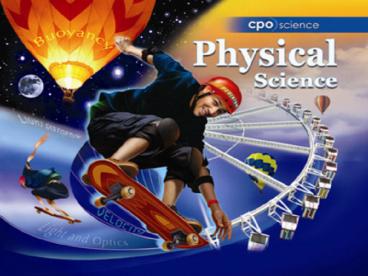Atoms, Elements, and Compounds PowerPoint PPT Presentation
1 / 19
Title: Atoms, Elements, and Compounds
1
(No Transcript)
2
Atoms, Elements, and Compounds
3
Chapter Thirteen The Atom
- 13.1 Fundamental Particles and Forces
- 13.2 Electrons in the Atom
4
Investigation 13B
Building the Elements
- How were the elements created?
5
13.2 Electrons in the atom
- Each different element has its own characteristic
pattern of colors called a spectrum. - The colors of clothes, paint, and everything else
around you come from this property of elements to
emit or absorb light of only certain colors.
6
13.2 Electrons in atoms
- Each individual color in a spectrum is called a
spectral line because each color appears as a
line in a spectroscope. - A spectroscope is a device that spreads light
into its different colors.
7
13.2 Bohr model of the atom
- Danish physicist Neils Bohr proposed the concept
of energy levels to explain the spectrum of
hydrogen. - When an electron moves from a higher energy level
to a lower one, the atom gives up the energy
difference between the two levels. - The energy comes out as different colors of light.
8
(No Transcript)
9
(No Transcript)
10
13.2 The quantum theory
- Quantum theory says that when things get very
small, like the size of an atom, matter and
energy do not obey Newtons laws or other laws of
classical physics.
11
13.2 The quantum theory
- According to quantum theory, particles the size
of electrons are fundamentally different - An electron appears in a wave-like cloud and has
no definite position.
12
13.2 The quantum theory
- The work of German physicist Werner Heisenberg
(19011976) led to Heisenbergs uncertainty
principle. - The uncertainty principle explains why a
particles position, momentum or energy can never
be precisely determined. - The uncertainty principle exists because
measuring any variable disturbs the others in an
unpredictable way.
13
13.2 The uncertainty principle
14
13.2 Electrons and energy levels
- In the current model of the atom, we think of the
electrons in an atom as moving around the nucleus
in an area called an electron cloud. - The energy levels occur because electrons in the
cloud are at different average distances from the
nucleus.
15
(No Transcript)
16
13.2 Electrons and energy levels
- The first energy level can accept up to two
electrons. - The second energy levels hold up to eight
electrons.
17
(No Transcript)
18
Technology Connection
Aim for the Stars Dr. Shirley Ann Jackson
- Dr. Shirley Ann Jackson is a well-known
scientist. - She has studied atoms and the particles inside
atoms for several decades.
19
Activity
Half-Life
- Radioactivity is how we describe any process
where the nucleus of an atom emits particles or
energy. - All radioactive elements have a half-life.
- This means that there is a certain length of time
after which half of the radioactive element has
decayed.

